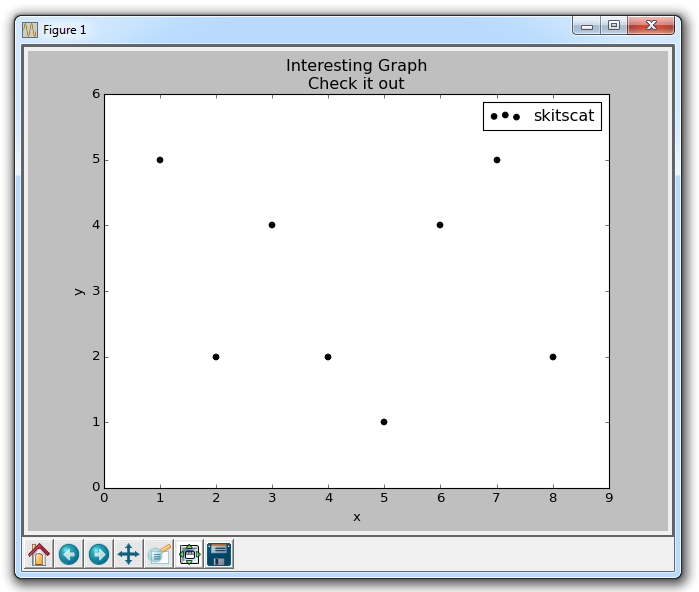

- Subplot scatter plot matplotlib how to#
- Subplot scatter plot matplotlib full#
- Subplot scatter plot matplotlib code#
Important commands are explained with interactive examples. Majority of plotting commands in pyplot have Matlab(TM) analogs with similarĪrguments. Pyplot provides a convenient interface to the matplotlib object-oriented


Interactive matplotlib sessions that have Matlab/Mathematica-like functionality. Shell commands, improved debugging and much more. Has lots of interesting features including named inputs and outputs, access to IPython is an enhanced interactive Python shell that Matplotlib in interactive mode covering most common cases. Publication-quality figures in many formats. Provides both a very quick way to visualize data from Python and Matplotlib is probably the single most used Python package for 2D-graphics. You can test your installation before the tutorial using the check-installation.py script.
Subplot scatter plot matplotlib code#
Returns : code and material is licensed under a Creative Commons Other keyword arguments are passed down to If False, no legend data is added and no legend is drawn.
Subplot scatter plot matplotlib full#
If “auto”,Ĭhoose between brief or full representation based on number of levels. If “full”, every group will get an entry in the legend. Variables will be represented with a sample of evenly spaced values. Specified order for appearance of the style variable levels You can pass a list of markers or a dictionary mapping levels of the Setting to True will use default markers, or
Subplot scatter plot matplotlib how to#
Object determining how to draw the markers for different levels of the Normalization in data units for scaling plot objects when the Otherwise they are determined from the data. Specified order for appearance of the size variable levels, Which forces a categorical interpretation. List or dict arguments should provide a size for each unique data value, sizes list, dict, or tupleĪn object that determines how sizes are chosen when size is used. Or an object that will map from data units into a interval. hue_norm tuple or Įither a pair of values that set the normalization range in data units Specify the order of processing and plotting for categorical levels of the Imply categorical mapping, while a colormap object implies numeric mapping.

String values are passed to color_palette(). Method for choosing the colors to use when mapping the hue semantic. Grouping variable that will produce points with different markers.Ĭan have a numeric dtype but will always be treated as categorical. Grouping variable that will produce points with different sizes.Ĭan be either categorical or numeric, although size mapping willīehave differently in latter case. Grouping variable that will produce points with different colors.Ĭan be either categorical or numeric, although color mapping willīehave differently in latter case. Variables that specify positions on the x and y axes. Either a long-form collection of vectors that can beĪssigned to named variables or a wide-form dataset that will be internally Parameters : data pandas.DataFrame, numpy.ndarray, mapping, or sequence This behavior can be controlled through various parameters, asĭescribed and illustrated below. In particular, numeric variablesĪre represented with a sequential colormap by default, and the legendĮntries show regular “ticks” with values that may or may not exist in theĭata. Represent “numeric” or “categorical” data. Semantic, if present, depends on whether the variable is inferred to The default treatment of the hue (and to a lesser extent, size) Hue and style for the same variable) can be helpful for making Using all three semantic types, but this style of plot can be hard to It is possible to show up to three dimensions independently by Parameters control what visual semantics are used to identify the different Of the data using the hue, size, and style parameters. The relationship between x and y can be shown for different subsets scatterplot ( data = None, *, x = None, y = None, hue = None, size = None, style = None, palette = None, hue_order = None, hue_norm = None, sizes = None, size_order = None, size_norm = None, markers = True, style_order = None, legend = 'auto', ax = None, ** kwargs ) #ĭraw a scatter plot with possibility of several semantic groupings.


 0 kommentar(er)
0 kommentar(er)
